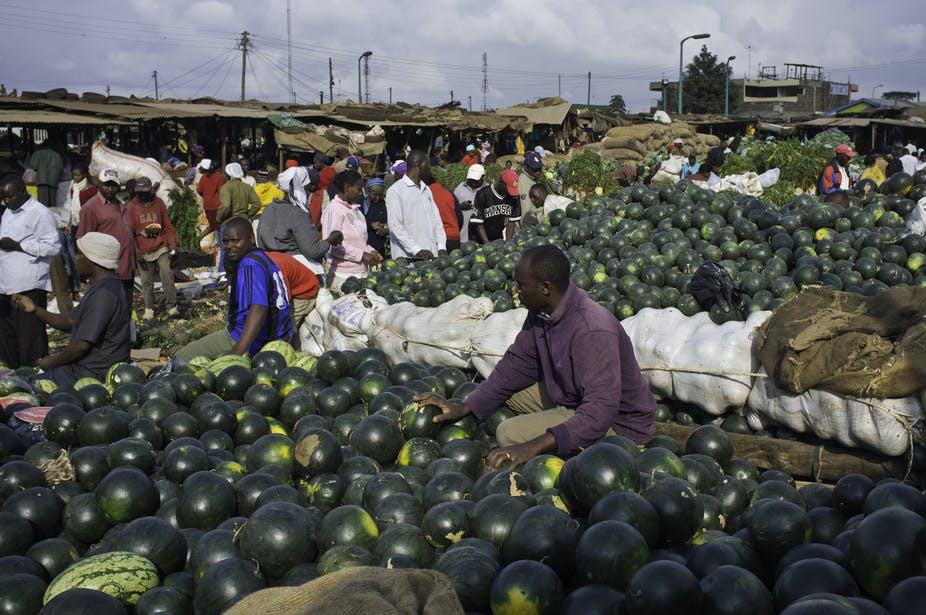Kenya faces one of the most challenging years when it comes to food security. According to the Food and Agricultural Organisation, food security is achieved
when all people, at all times, have physical, social and economic access to sufficient, safe and nutritious food that meets their dietary needs and food preferences for an active and healthy life.
Even before the COVID-19 pandemic knocked on its door, the country faced a devastating desert locust invasion. This added to constraints posed by excessive rainfall experienced from October 2019.
The worst food insecurity that Kenya has faced in recent years was in 2017 and 2008. The food production deficit and food prices were their highest ever in these years.
The Kenya National Bureau of Statistics estimates that about 12 million people are food poor. These are people whose income doesn’t enable them to consume enough calories for a healthy lifestyle. Two-thirds of the food poor individuals are found in rural areas.
Kenya relies heavily on maize, wheat, rice and Irish potatoes for food. It is estimated that the country imports about 90% of the total rice demand and about 75% of the total wheat demand. The rest is produced locally. For example, Kenya produces most of the total maize demand itself, importing only about 10%.
A key challenge for the country is to raise productivity in the agriculture sector. This would not only ensure food availability, but potentially lift households out of poverty. To attain this, the country must reduce reliance on rainfed agriculture systems, use modern varieties and technologies by enhancing investments in extension systems, build resilience of farmers against the effects of climate change and variability, and improve agricultural market systems and infrastructure.
The coronavirus outbreak adds to the challenge because markets have been closed and delivery of food has been disrupted.
Immediate challenges
The 2019/2020 season was favourable with most parts of the country receiving above-average rainfall. But above-normal rainfall continued through the harvest period, with adverse effects.
The agriculture ministry now estimates that 10,000 hectares of cropland were destroyed during the long rain season alone. And post-harvest losses are expected to be higher than usual because grain didn’t dry adequately in the wet weather.
In December 2019, vast swarms of desert locusts started arriving in the country. By March 2020, the Food and Agriculture Organisation categorised the threat to the country as dangerous, because the locusts continued to breed and form new swarms.
This is the context in which the first case of COVID-19 was announced in March. Administrative measures have included the closure of produce markets and dawn to dusk curfews.
These were highly disruptive for food delivery. This is because Kenya’s food system is heavily dominated by small, independent transporters as the link between producers and consumers. Produce markets, which are at the heart of distribution in urban areas, serve consumers and smaller retailers. This traditional informal system accounts for about 90% of the market.
The closure of many of these markets in the urban and peri-urban areas, while a reasonable measure to avoid crowding, has disrupted food supply systems, especially for fresh produce. The impact is felt most in low-income urban households which rely on these informal food markets.
The same cannot be said for the middle- and higher-income families who can buy fresh produce from supermarkets and grocery shops, which remain open.
The ministry of agriculture has now agreed to categorise transport of foodstuff as an essential service, to improve food supply in urban areas. But this is not enough. If produce markets remain closed, supply systems still aren’t working fully. About 90% of fresh fruits and vegetables are sold through these markets. A further measure should be to ensure that markets remain open all day, although at reduced capacities.
Read More Via https://theconversation.com/




